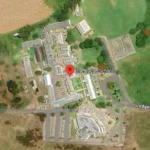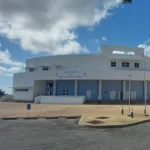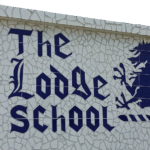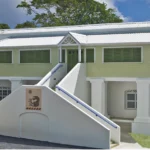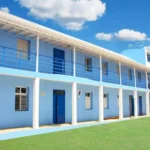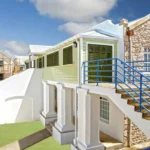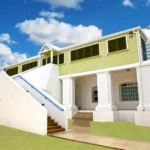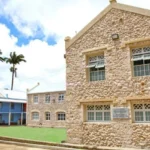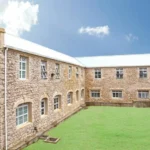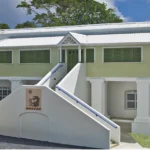The Lodge School had its beginnings in a bequest made by Sir Christopher Codrington, who had two estates on the island.
The Codrington experiment was to baptize and instruct in Christian education, which was greeted with much suspicion by other Barbadian slave owners in the 18th century. Codrington managers were ordered to give his people time off for themselves (usually a Saturday), Sunday being reserved for Christian instruction through which they were to have the benefits of education and the consolations of the Christian religion.
There is some dispute as to the exact date of the school’s foundation. Building work is recorded as having commenced in 1714, but was not finished until 1743. The Barbados Pocket Book of 1838, however, records that the Codrington Foundation School was founded in 1721. When the school opened its doors to twelve foundationers to “teach them gratis, the Sons of such Persons as shall be judged not to be in Sufficient Circumstances to bring them up in learning the learned languages” on 9 September 1745, some recognize this date officially as its inception. Other pupils were fee-paying, and most were boarders. The Lodge School is therefore one of the oldest secondary educational establishments in Barbados.
The Boarding Establishment
After the school relocated to its current premises in 1829, it became customary, given the premium placed on limited educational opportunity, for some of its few students to be sent to board with the resident Headmaster. ‘The Lodge School Record’ for 1911 reports that in 1863, there were 36 pupils of whom 25 were boarders. This pattern of boarders providing either a majority or a significant percentage of the school’s roll continued well into the 1930s. As the demand for a place at The Lodge grew in the 1870s and thereafter, so too did the demand for boarding. The school’s Governing Body added to the existing buildings in order to increase the number of boarders, but it eventually took direct financial control and in the 1940s brought an end to what had been a private arrangement between parents and successive Headmasters.
At its peak in the 1950s, the Boarding Establishment accommodated 92 students, many of whom were termly boarders who came from almost every island in the English-speaking Caribbean and Venezuela. Among the well-known termly boarders of the 1960s and 1970s were John Maginley (former Minister of Tourism in Antigua), Tony Astaphan S.C. (prominent Attorney-At-Law in Dominica), Dr. Lennox Honychurch (Dominican Historian), the Haydocks from St. Vincent, and McWelling Todman from Tortola.
Dr. Stuart McIntyre (Dominica) now practices dentistry in Barbados, and Dr. Clyde Cave (Antigua) is the Director of Medical Services at the Queen Elizabeth Hospital in Barbados. A few local termly boarders were Sir Geoffrey Cave (Businessman), Challenor Jones (Jockey), Philip Goddard (Businessman), Ian Bishop (Attorney -At- Law), Arthur Edwards (Artist and Sculptor), and the late Tony Cozier. The advent of free secondary education in Barbados and many other factors, including improved educational facilities in the neighbouring islands, caused a dwindling of the number of boarders to well under 50 by the mid-1970s.
The Boarding Establishment was closed in 1979, and the area it occupied was utilized by the school.

